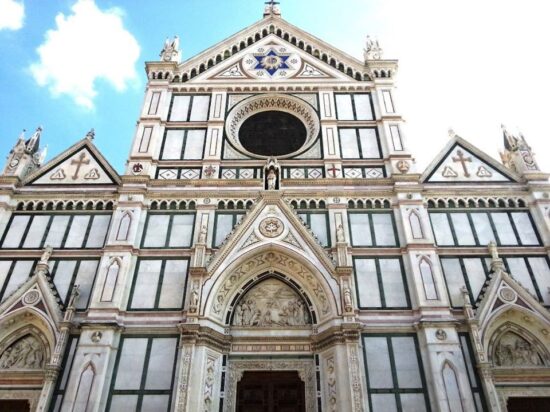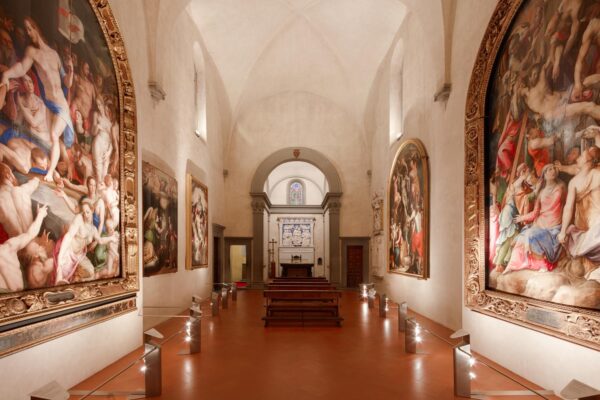Piazza and Basilica di Santa Croce
Back south (towards the River) and more to the east, through one of the roads that span from Piazza Della Signoria to that direction (Via dei Gondi and then Borgo Dei Greci or Via dell’Anguillara) we’ll soon come across one of the most prestigious and famous squares in Florentine history, the Piazza and Basilica di Santa Croce.
The Church of Santa Croce that gave the square its name was built outside the circle of city walls in a poor marshy area, so little populated that it was possible to leave a large space suitable to welcome the crowds coming to listen to preachers and see sacred representations, tournaments, and other performances. As time went by the square became the focal point of Florentine cultural and commercial life.
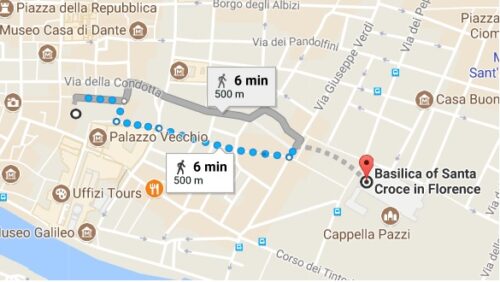
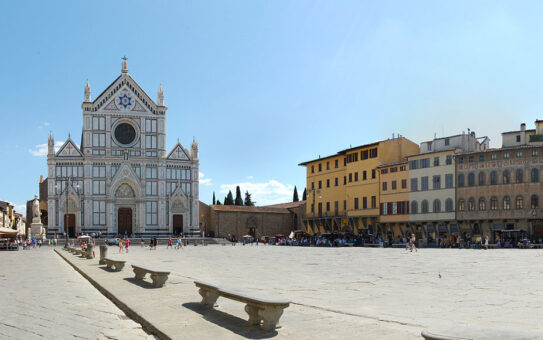
Along its perimeter there are prestigious buildings: Cocchi Serristori, attributed to Giuliano da Sangallo or Baccio d’Agnolo, whose façade was frescoed between 1619 and 1620, are the most important ones. During Renaissance times festivals and jousts took place in the square: the most famous one was the one won by Giuliano de’ Medici; the victory was celebrated in the work entitled “Stanze” written by Agnolo Poliziano.
Nowadays, every year, Santa Croce square turns into a pitch on the occasion of the matches played for the Calcio Fiorentino: in 1565 a rounded piece of marble was placed on the wall of Palazzo dell’Antella to indicate the half of the field; a mark is also on the opposite side.
The game, originally called “football in livery”, was played in other places as well but Santa Croce was the venue of the game, performed on February 17th, 1530. It became famous because it proved the fighting spirit of the citizens who participated despite Florence being besieged by the army of Emperor Charles V. Description by www.santacroceopera.it/en
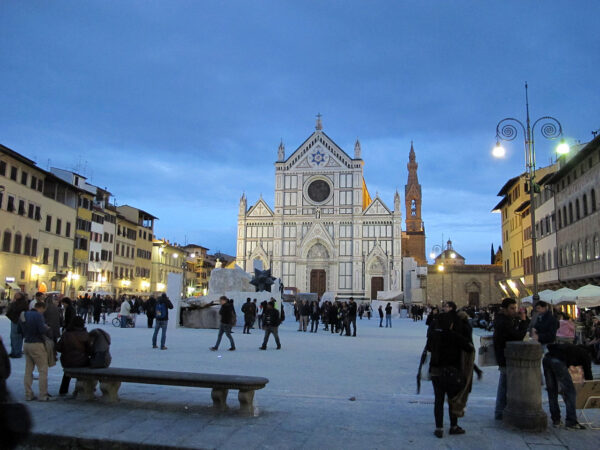
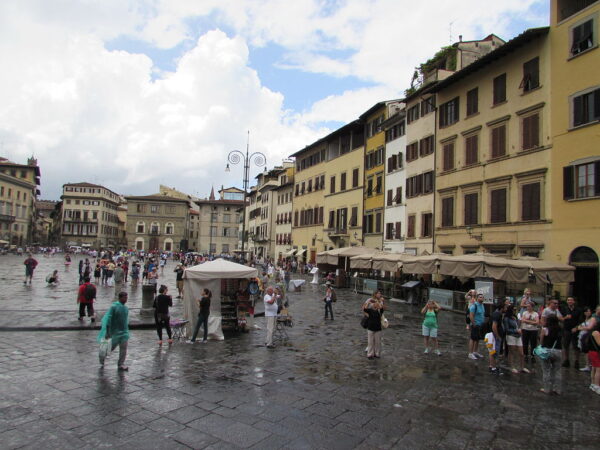
A small oratory already built in 1228 provides the earliest evidence of a Franciscan settlement in a marshy area close to the north side of the Arno River.
The building was enlarged towards the middle of the century but its dimensions were not sufficient to welcome the many worshippers who used to attend it so on the 3rd of May 1294 or 1295 (the year is not certain) the erection of the present Church of Santa Croce began.
The ceremony, accurately recorded by Giovanni Villani, was solemn: the representatives of the religious and political powers as well as noble and wealthy Florentine men and women, took part in the event. In the beginning, Santa Croce housed the graves of the families living in the district; then, in the fifteenth century, became the guardian of the memory of illustrious Florentines by hosting the tombs of the Chancellors of the Republic Leonardo Bruni and Carlo Marsuppini.
The monument dedicated to Michelangelo was built in 1564 and the one made for Galileo, later on, inspired Ugo Foscolo who, in the poem entitled I Sepolcri written in 1807, calls Santa Croce “the Temple of the Italian glories”, marking its change from Pantheon of the town of Florence to Pantheon of the Italians. For more on the Church go to www.santacroceopera.it/en/
